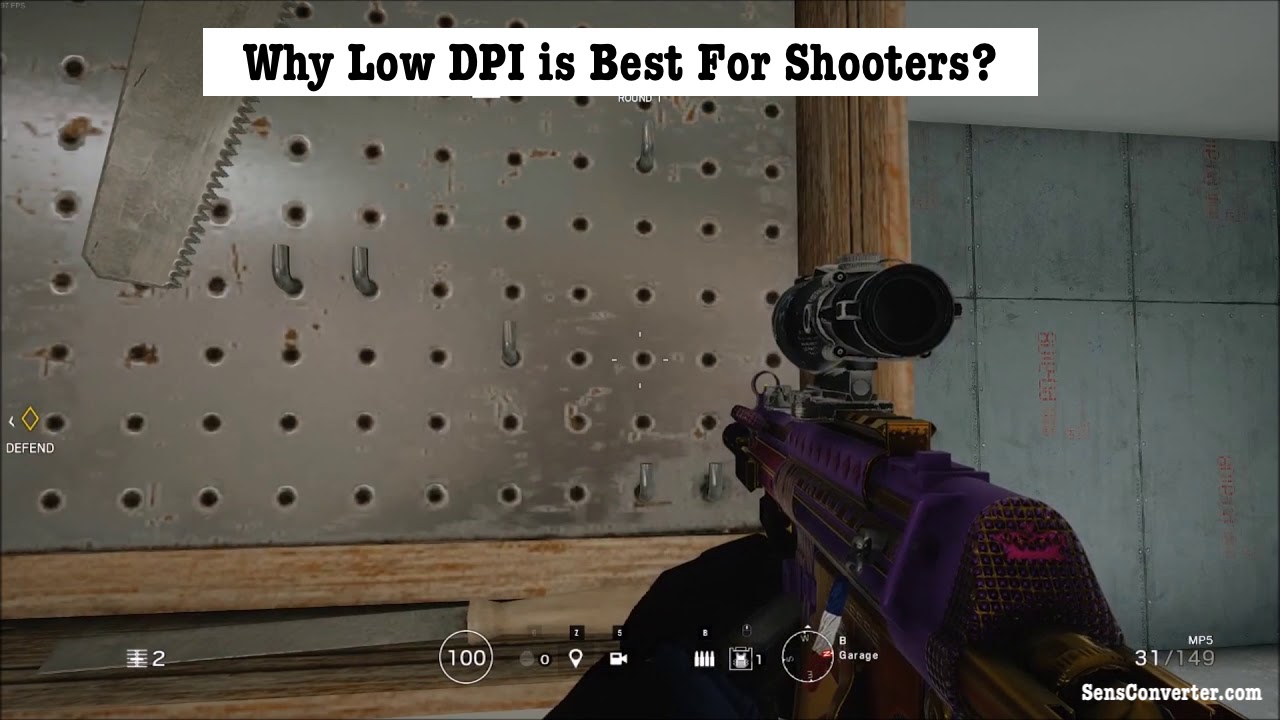Why Low DPI is Best For Shooters?

Dots per inch or DPI plays an important role for shooters while playing FPS games. No such thing as the right value of DPI exists because each player has got their preferences. In addition to this, there are multiple blogs, videos, and how-to guides explaining what the best DPI value for shooters is but their technical language may be hard to understand. It’s an unsaid rule of gaming that low DPI is always best for shooters. So let’s find out why low DPI is best for shooters and why they shouldn’t play FPS games at higher DPI value or sensitivity.
Why is low DPI best for shooters?
Low DPI is considered to be better for shooters as compared to high DPI value. This is because of several reasons, some of which are listed below.
- Since lower DPI corresponds to reduced sensitivity of the mouse, this helps you to gain precision in your movements and aim better at the targets.
- When you are snapping crosshairs on your enemy, lower sensitivity allows you to avoid overly shooting your target enemy.
- It helps in making micro-adjustments and smoothens the natural twitches that we make while playing the games.
Playing the games at a high DPI decreases the resolution of the smallest movement that your crosshairs can make when you move your hand. On the other hand, a lower DPI increases the resolution of your smallest movements, helping you aim better at your target.
Relation between DPI and in-game sensitivity
DPI is the measure of pixels moved by your cursor on the screen with respect to the movement of your mouse on the table. When the DPI is high, the pixels moved by the cursor are much more than the actual distance moved by the mouse on the desk. In contrast, a low DPI needs the mouse to move a longer distance to move the cursor through the same amount of pixels on the screen. The shooters can set the DPI of their mouse using specific software that is especially dedicated to the games and changing the in-game sensitivity changes the mouse sensitivity for playing games.
eDPI or effective dots per inch is another frequently used term in gaming and is especially important for multiple shooters. This helps to maintain a consistent amount of dots per inch throughout all the shooters. Since each game has its own specifications like scale, eDPI is an effective way to apply your ideal DPI to match with the FPS games. To obtain the value of eDPI, you will need to find out the product of your in-game sensitivity and DPI value. There are online calculators to find out the value of eDPI for your computer.
What is the best DPI for FPS games?
The best DPI for FPS games may be a subjective term because each gamer has their own preferences in terms of the type of FPS game they want to play, the DPI at which they wish to play the game, and the level of expertise that they have in it. However, the mouse is the most important deciding element of your performance aspects like aim, movement, shooting. Among these, the aim and movement are immediately affected by the DPI of your mouse. For a better aim, a lower DPI is desirable because it means that you will have to move your mouse more in the game. This allows a sharp precision while aiming at the targets which is extremely essential for shooters. So the best DPI for first-person shooter games lie between 400 to 800.
How to change the in-game DPI of a mouse?
You can easily change the in-game sensitivity of your mouse by navigating through some options in the video game itself. If you set the DPI in the game, it will change the sensitivity of the mouse only for that game. To change the in-game DPI of your mouse, follow the steps given below.
- Launch the FPS game in which you wish to change the DPI of your mouse.
- In the Title bar, look for options labeled “Settings” or “Options”.
- Locate the “Controls” menu in the game options and find the “mouse sensitivity” slider. Move your mouse cursor over the slider until you feel the appropriate and smooth movement of your cursor.

